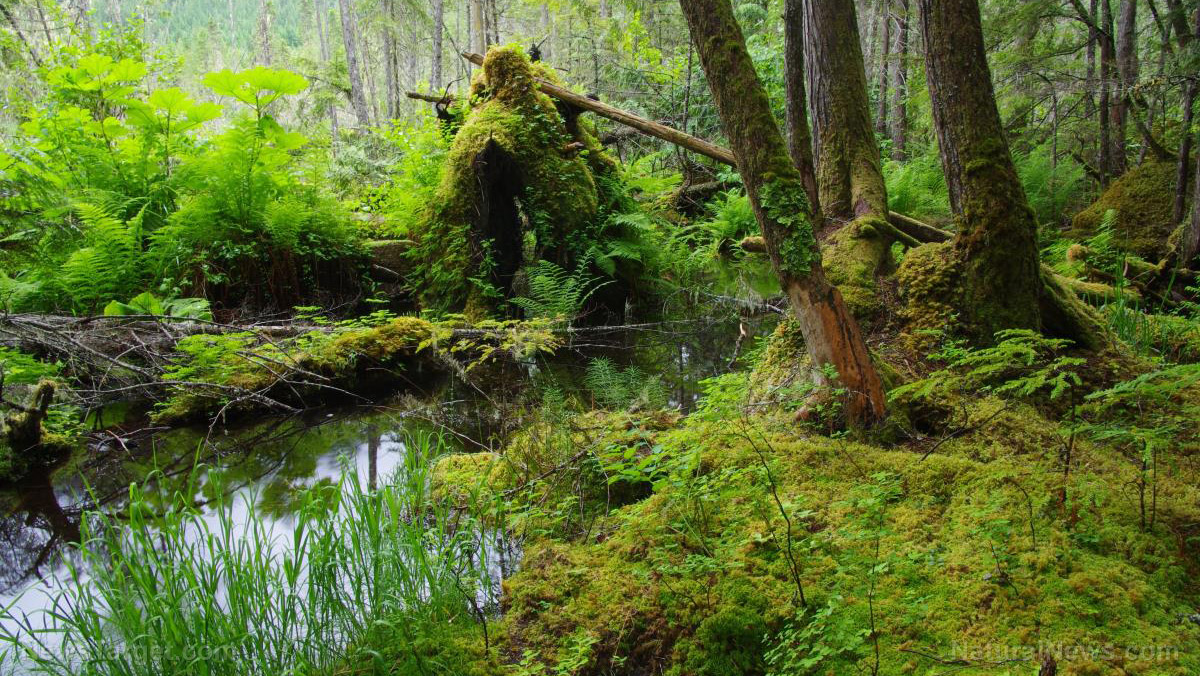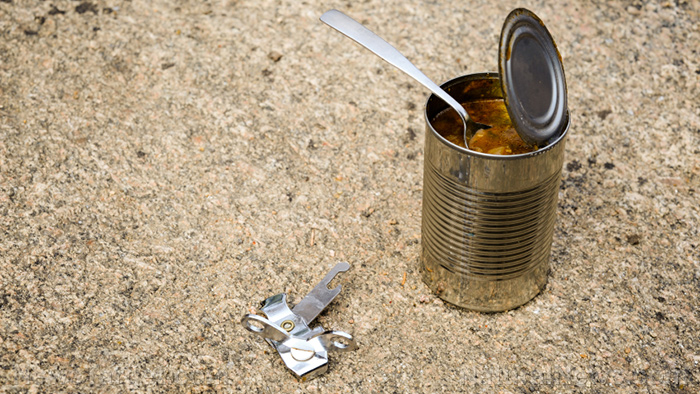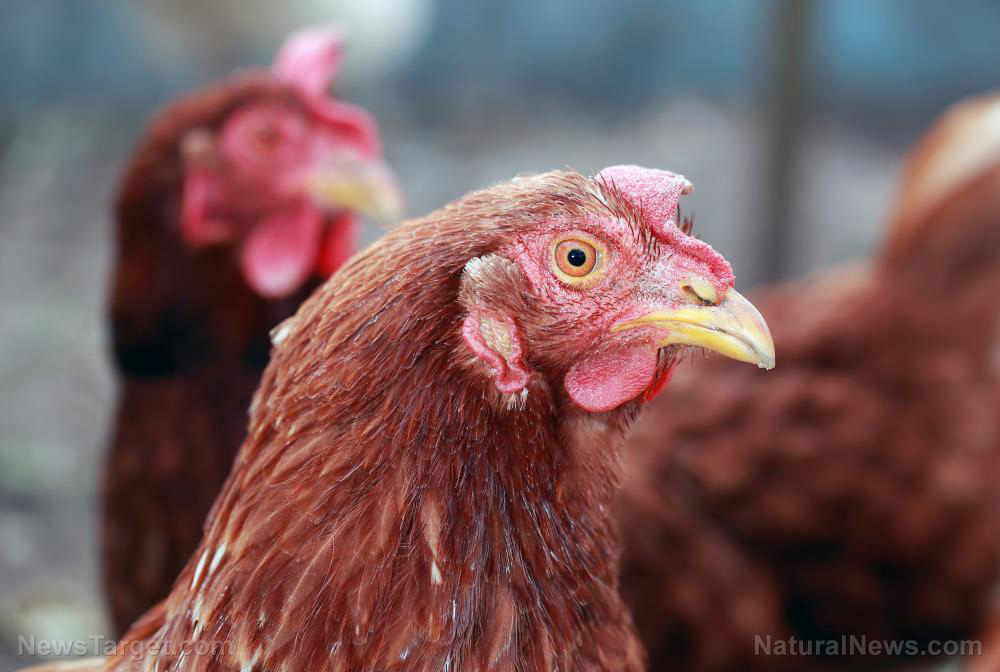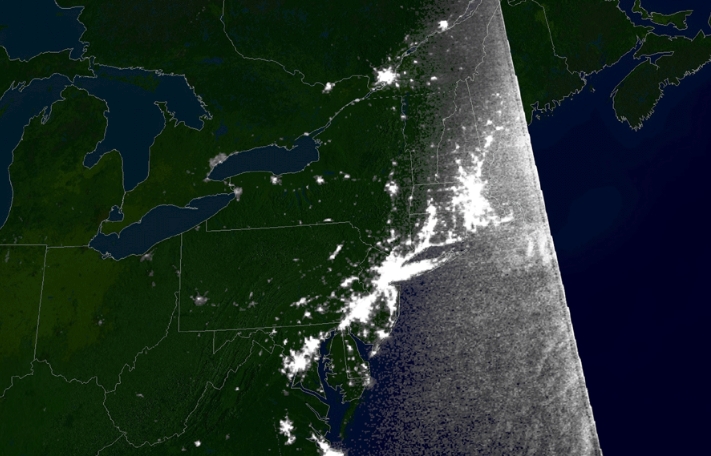How to add bullfrogs to your survival menu
10/02/2019 / By Zoey Sky

If you decide to bug out when SHTF, setting up camp near a body of water offers several benefits. Aside from having an available source of water for your various needs, you can also hunt for American bullfrogs, which can be alternative sources of meat and protein during survival scenarios. (h/t to Survivopedia.com)
Identifying the American bullfrog (Lithobates catesbeianus)
Bullfrogs measure about three to six inches from snout to vent, but larger bullfrogs can grow up to eight inches.
- The appearance of bullfrogs may vary. Some are brown, while others can be green or olive in color.
- The back of bullfrogs may have small brown spots or dark, indistinct, irregular blotches.
- Their hind legs are marked with noticeable dark brown bars.
- Bullfrogs have white bellies, with some gray mottling near the throat.
- Their external tympanum (eardrum) is large and round.
- The eardrum of adult male bullfrogs is much larger than the eye, but they are about the same size in females.
- Bullfrogs have a deep, sonorous call that can be heard from at least half a mile away or even farther.
Indigenous North American tribes consumed bullfrogs as a staple food, and in modern cuisine, frog hind legs are called “drumsticks.” Bullfrog meat is often compared to chicken or fish due to its rather mild flavor.
Where to find bullfrogs
Bullfrogs are usually found in various parts of the Rockies, and in Western states where the species was introduced.
Bullfrogs are highly aquatic animals. They prefer marshes with quiet waters or the backwaters and edges of lakes, ponds, and streams.
Bullfrogs often hide among thick growths of cattails or other aquatic plants. They will only leave permanent bodies of water in exceptionally wet weather.
During the day, bullfrogs can be difficult to approach. At night, however, you can locate them by searching for their reflective eyes.
Catching bullfrogs
In the past, flashlights were used to catch bullfrogs. The light seems to have a paralyzing effect on bullfrogs. You can catch bullfrogs by hand once you dazzle them with a flashlight.
However, the most effective tool for frogging (hunting frogs) is a gig, especially when paired with a flashlight for night hunting.
There are two types of gigs: the spear gig and the clamp gig.
- The spear gig is the most preferred tool for frogging. A frog stabbed with it will remain stuck to the spear because of the barbs on its tines. However, a spear gig can be ineffective if the bullfrog is floating on water or in soft reeds where it can’t be pinned down. A spear gig can also glance off the hard, bony back of a frog.
- The clamp gig is popular among experienced frog hunters. A hunter can use this gig to snatch a frog out of almost any hiding place. When cocked, the spring action is sensitive to the touch. The clamp gig’s jaws will close when the trigger prongs make contact with a frog.
The position of a bullfrog’s eyes gives it an almost 360-degree view, making it difficult to capture when approached head-on.
Frogging requires a bit of care. Remain quiet and remember that bullfrogs are relatively easy to gig if you approach from the rear, the side, or from above. You can also use other means of catching bullfrogs, such as archery, large dip nets, or rifles.
When frogging at night, use a high-quality light that can throw a strong spot beam. Use hand-held flashlights, a spotlight, or a high-beam lantern. Alternatively, you can use a fire torch with an improvised reflector, such as aluminum foil or a piece cut from a tin can.
Frogging tips
If you’re frogging at night, slowly cast the flashlight beam along the water’s edge and look for the tell-tale golden-green reflection of bullfrog eyes. To differentiate bullfrogs from aquatic insects and other animals with reflective eyes, listen for their deep croaks.
When hunting frogs during the day, search in a small pond or a shallow, grassy marsh with sparse cover.
When first seized, bullfrogs may pretend to be dead by hanging limp and motionless. Store captured bullfrogs in a cold, damp sack and keep the mouth securely tied to prevent escape.
Bullfrog legislation
During quiet times, you must observe hunting and fishing laws. But when SHTF, these laws may be suspended.
Open season for bullfrogs usually starts in June and lasts until November, but this can vary depending on your state. Learn about the laws in effect in your area before going frogging.
Cooking bullfrogs
When preparing bullfrogs for cooking, kill them with a sharp blow to the head. Use pliers to peel off the skin, then remove the webbed feet with a knife or wire cutters. (Related: Adjusting to a diet fit for a post-collapse world.)
Consume as much of the bullfrog as possible so you don’t waste any of the meat. You can fry frog legs after dipping them in batter made with flour and eggs. Alternatively, bullfrogs can be baked or broiled.
Bullfrogs are seasonal and they hibernate in the winter. They usually return in mid-spring and can be hunted through autumn, but the best seasons for hunting is late spring and early summer.
Practice gigging so you can hunt bullfrogs when SHTF.
Sources include:
Tagged Under: American bullfrogs, bug out, bullfrogs, clamp gig, Collapse, cooking, disaster, emergency food, emergency preparedness, flashlights, food independence, food preparation, food supply, frog hunting, frogging, frogging tips, frogs, Gear, how-to, hunting, hunting gear, Lithobates catesbeianus, off grid, Off-the-grid living, preparedness, prepping, prepping tips, protein source, self sufficiency, self-reliance, self-sustainability, SHTF, spear gig, survival, survival food, survival skills, Survival Tips, survivalist, wilderness survival
RECENT NEWS & ARTICLES
COPYRIGHT © 2017 OFFGRID NEWS



















